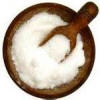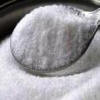Search for the supplies that you need here:
DMF Support and Documentations Available | |
 WHO-GMP Certified Good Manufacturing Practice Certified by World Health Organization |  WC, Written Confirmation for Active Substance to be imported into European Union (EU). |
Sodium Nitrite SDS of Suppliers
Anmol Chemicals is a manufacturer supplier exporter of Sodium Nitrite and it offers materials as per IP BP EP Ph Eur USP NF JP FCC Food Grade as per the the latest monograph at best prices. Anmol Chemicals Group, established in 1976, is the pioneer manufacturer of Specialty Chemicals, Pharmaceutical Excipients, Some API, Food Chemicals in India. Anmol Chemicals Group has manufacturing facilities spread across Western India, representatives in Houston, Chicago USA and Dubai, UAE. We also have toll manufacturing units for processing chemicals in a few countries around the world. We make IP, BP, EP, USP, NF, Ph. Eur., JP, FCC or Food Grade, Analytical Reagent Grade, LR or Laboratory Reagent Grades and Pure Grades of various chemicals. All our items are analyzed to meet the required standards. We can supply the product in grams for your laboratory trial and in tons for your plant scale jobs.
We manufacture Bulk Drugs / API, Excipients, Pharmaceuticals (IP BP USP NF Ph Eur EP JP), Specialty Chemicals (Pure/Reagent), Mineral Fortifiers (FCC). Our manufacturing facility is FDA approved and GLP, cGMP, ISO9001, ISO14001, ISO/IEC 17025, ISO22000, FSSC 22000, ISO45001, FSSAI, Kosher, HALAL, COPP, WHO-GMP certified and Written Confirmation (WC) is available. Solid materials can be customized for particle size, shape, and bulk density. We observe WHO Good Manufacturing Practices and Good Laboratory Practices. We are a government-recognized STAR Export House and "Authorised Economic Operator (AEO)" per Indian Customs.
All technical documents and DMF support available.
Sodium Nitrate CAS No.: 7631-99-4, Molecular Weight: 84.99, Chemical Formula: NaNO3
Sodium Nitrite CAS No.: 7632-00-0, Molecular Weight: 69, Chemical Formula: NaNO2
Sodium Nitrite SDS of Manufacturers
Sodium Nitrate SDS of Manufacturers
Sodium Nitrite SDS, Safety Data Sheet
MSDS Sheet, Material Safety Data Sheet
1: Section 1: Chemical Product and Company Identification
Product Name & Other Names: Sodium Nitrite or Nitrous acid, sodium salt.
CAS No.: 7632-00-0
EINECS EC Number: 231-555-9
Molecular Weight: 69.00
Chemical Formula: NaNO2
Relevant uses and uses advised against (if any): Industrial Manufacturing.
Suppliers: As per letterhead.
Section 2: Hazards Identification
GHS, Globally Harmonized System Classification in accordance with 29 CFR 1910
Classification according to Regulation (EC) No 1272/2008
Oxidizing solids Category 3, H272
Acute toxicity, oral Category 3, H301
Skin corrosion/irritation Category 2, H315
Serious eye damage/eye irritation Category 2B, H320
Specific target organ toxicity, single exposure; Respiratory tract irritation Category 3, H335
Hazardous to the aquatic environment, acute hazard Category 1, H400
Labeling according Regulation (EC) No 1272/2008
GHS Label Elements 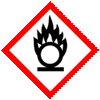 Oxidizing Solid |
GHS Label Elements 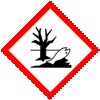 Aquatic Toxicity | GHS Label Elements 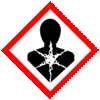 Health Hazard |
Signal Word: Danger
Hazard Statements:
H272: May intensify fire; oxidizer.
H301: Toxic if swallowed.
H315: Causes skin irritation.
H320: Causes eye irritation.
H335: May cause respiratory irritation.
H400: Very Toxic to aquatic life.
Precautionary Statements
P210: Keep away from heat/sparks/open flames/hot surfaces – No smoking.
P220: Keep/Store away from clothing/---/combustible materials.
P221: Take any precaution to avoid mixing with combustibles.
P260: Do not breathe dust/fume/gas/mist/vapors/spray.
P264: Wash thoroughly after handling.
P270: Do not eat, drink or smoke when using this product.
P273: Avoid release to the environment.
P280: Wear protective gloves/protective clothing/eye protection/face protection.
P330: Rinse mouth.
P301+P310: IF SWALLOWED: Immediately call a POISON CENTER or doctor/physician. P301+P330+P331 IF SWALLOWED: rinse mouth. Do NOT induce vomiting.
P302+P35: IF ON SKIN: Wash with soap and water.
P303+P361+P353 IF ON SKIN (or hair): Remove/Take off immediately all contaminated clothing. Rinse skin with water/shower.
P304+P340 IF INHALED: Remove victim to fresh air and keep at rest in a position comfortable for breathing.
P305+P351+P338: IF IN EYES: Rinse cautiously with water for several minutes. Remove contact lenses, if present and easy to do. Continue rinsing.
P332+P313: If skin irritation occurs: Get medical advice/attention.
P337+P313 If eye irritation persists: Get medical advice/ attention.
P370+P378: In case of fire: Use water or water-spray or foam for extinction.
P362: Take off contaminated clothing and wash before reuse.
P391: Collect spillage.
P405: Store locked up.
P501: Dispose of contents/container in accordance with local/regional/national/international regulations.
Classification according to EU Directives 67/548/EEC or 1999/45/EC:
Hazard Symbols:
O Oxidizing
T Toxic
Xi Irritant
N Dangerous for the environment.
Risk Phrases:
R8 Contact with combustible material may cause fire.
R25 Toxic if swallowed.
R36/37/38 Irritating to eyes, respiratory system, and skin.
R50 Very toxic to aquatic organisms.
Section 3: Composition and Information on Ingredients
Product Name & Other Names: Sodium Nitrite or Nitrous acid, sodium salt.
CAS No.: 7632-00-0
EINECS EC Number: 231-555-9
Section 4: First Aid Measures
Always seek medical attention after first aid measures are provided.
Eye Contact: Immediately flush eyes with plenty of water for at least 15 minutes, lifting lower and upper eyelids occasionally. Get medical attention immediately.
Skin Contact: In case of contact, immediately flush skin with plenty of water. Cover the irritated skin with an emollient. Remove contaminated clothing and shoes. Cold water may be used. Wash clothing before reuse. Thoroughly clean shoes before reuse. Get medical attention.
Inhalation: If inhaled, remove to fresh air. If not breathing, give artificial respiration. If breathing is difficult, give oxygen. Get medical attention immediately.
Ingestion: If swallowed, do not induce vomiting unless directed to do so by medical personnel. Never give anything by mouth to an unconscious person. Loosen tight clothing such as a collar, tie, belt, or waistband. Get medical attention immediately.
Section 5: Fire and Explosion Data
Fire: Not combustible, but substance is a strong oxidizer and its heat of reaction with reducing agents or combustibles may cause ignition. Increases the flammability of any combustible material.
Explosion: Contact with oxidizable substances may cause extremely violent combustion. May explode when heated to 537C (1000F) or on severe impact or on contact with cyanides, ammonium salts, cellulose, lithium, potassium plus ammonia, and sodium thiosulfate.
Fire Extinguishing Media: Water or water spray in early stages of fire. Foam may also be used but avoid the use of multi-purpose dry chemical fire extinguishers where contact with sodium nitrite may occur. Water streams may scatter molten material.
Special Information: Sodium and Nitrogen Oxides are formed on heating. In the event of a fire, wear full protective clothing and NIOSH-approved self-contained breathing apparatus with full face piece operated in the pressure demand or other positive pressure mode. Decomposition of sodium nitrite may leave a caustic residue.
Section 6: Accidental Release Measures
Personal precautions, protective equipment, and emergency procedures: Avoid breathing dust/fumes/gas/mist/vapors/spray. Use individual protective equipment (waterproof boots, suitable protective clothing, safety glasses, etc.). Restrict unprotected personnel from the area. Prevent any contact with hot surfaces. Do not approach facing the wind. Do not touch the spilled material.
Environmental precautions: Do not let the product enter drains, soil, or water sources.
Methods and materials used for containment Cleanup procedures and Storage:
Small Spill: Use appropriate tools to put the spilled solid in a convenient waste disposal container. Clean up spills in a manner that does not disperse dust into the air. Use non-sparking tools and equipment. Reduce airborne dust and prevent scattering by moistening with water.
Large Spill: Remove all sources of ignition. Do not inhale dust, vapors, mist, or gas. Avoid dust formation. Contain spilled material. Cover with an inert, non-combustible absorbent material, (e.g. sand, earth, diatomaceous earth, vermiculite). Use a shovel to put the material into a convenient waste disposal container. Finish cleaning by spreading water on the contaminated surface and allow to evacuate as per law.
Section 7: Handling and Storage
Precautions for safe handling: Keep away from sources of ignition. Keep away from combustible material. Do not ingest. Apply according to good manufacturing and industrial hygiene practices. Ensure proper ventilation. In case of insufficient ventilation, wear suitable respiratory equipment. Wash thoroughly after handling. Do not drink, eat, or smoke while handling. Avoid contact with skin, eyes, and clothing. Minimize dust generation. Avoid breathing dust/fumes/gas/mist/vapors/spray. Avoid contact with eyes, skin, and clothing. Keep container tightly closed. Avoid ingestion and inhalation. Use individual protective equipment (waterproof boots, suitable protective clothing, safety glasses, etc.). Prevent any contact with hot surfaces.
Conditions for safe storage, including any incompatibilities: Store in cool, dry, and ventilated area away from heat sources and protected from sunlight in tightly closed original container. Keep air contact to a minimum. Store protected from heat, sparks and ignition sources and incompatible materials. Avoid contact with skin and eyes. Avoid inhalation of dust/mist/vapor. Do not store with incompatible materials like strong oxidizing agents, acids, alkalis, reducing agents, organic materials, metals, and combustibles. Oxidizer. Hygroscopic. Air sensitive.
Section 8: Exposure Controls/Personal Protection
Engineering Controls: Use process enclosures, local exhaust ventilation, or other engineering controls to keep airborne levels below recommended exposure limits. If user operations generate dust, fume, or mist, use ventilation to keep exposure to airborne contaminants below the exposure limit.
Ventilation System: A system of local and/or general exhaust is recommended to keep employee exposures as low as possible. Local exhaust ventilation is generally preferred because it can control the emissions of the contaminant at its source, preventing dispersion of it into the general work area.
Personal Respirators (NIOSH Approved): For conditions of use where exposure to dust or mist is apparent and engineering controls are not feasible, a particulate respirator may be worn. For emergencies or instances where the exposure levels are not known, use a full-face positive-pressure, air-supplied respirator.
Skin Protection: Wear protective gloves and clean body-covering clothing.
Eye Protection: Use chemical safety goggles and/or full face shield where dusting or splashing of solutions is possible. Maintain eye wash fountain and quick-drench facilities in work area.
Other Control Measures: Maintain good housekeeping in work area. Dust deposits on floors and other surfaces may pick up moisture and cause the surfaces to become slippery and present safety hazards. Handle in accordance with good industrial hygiene and safety practice. Wash hands after handling.
Section 9: Physical and Chemical Properties
Physical state and appearance: Solid. (White powdered solid or crystals.)
Odor: Odorless.
Odor threshold: Not available.
pH (1% soln/water): 9 [Basic.]
Relative density: around 2.2
Boiling Point: 320C (608F).
Melting Point: 271C (519.8F).
Flash point: Not available.
Auto-ignition temperature: Not available.
Decomposition temperature: Not available.
Upper/lower flammability or explosive limits: Not available.
Vapor pressure: Not available.
Vapor density: Not available.
Evaporation rate: Not available.
Flammability (solid, gas): Not available.
Partition coefficient: n-octanol/water: Not available.
Solubility(ies): Easily soluble in hot water. Soluble in cold water. Partially soluble in methanol. Very slightly soluble in diethyl ether.
Viscosity: Not available.
Chemical Formula: NaNO2
Molecular Weight: 69
Section 10: Stability and Reactivity Data
Stability: It is stable.
Instability Temperature: Not available.
Conditions of Instability: Excess heat, dust generation, ignition sources, exposure to air, combustible materials, incompatible materials, exposure to moist air or water.
Incompatibility with various substances:
Highly reactive with combustible materials, organic materials.
Reactive with reducing agents, metals, acids.
Slightly reactive to reactive with moisture.
Special Remarks on Reactivity:
Hygroscopic.
Strong oxidizer.
Slowly oxidizes to nitrate in air.
Reacts vigorously with reducing materials.
It is a strong oxidizer and is incompatible with the following: acetanilide, metals as powders, ammonium salts, amino guanidine salts, anti pyrine, Butadiene, chlorates, hypophosphites, activated carbon, iodides, mercury salts, permanganate, phthalic acid, phthalic anhydride, sodium amide, sodium disulphite, cyanides (e.g. potassium cyanide, sodium cyanide), sodium thiocyanate, lithium, sulfites, tannic acid, urea, wood, vegetable astringent decoctions, infusions, or tinctures.
Polymerization: Will not occur.
Section 11: Toxicological Information
Oral rat LD50: 180 mg/kg; inhalation rat LC50: 5500 ug/m3; irritation: eye rabbit: 500 mg/24H mild. Investigated as a tumorigen, mutagen, reproductive effector.
Carcinogenicity: IARC: 2A - Group 2A: Probably carcinogenic to humans (Sodium nitrite).
Section 12: Ecological Information
Toxicity to fish: flow-through test LC50 - Oncorhynchus mykiss (rainbow trout) - 0,94 - 1,92
mg/l - 96,0 h mortality NOEC - Oncorhynchus mykiss (rainbow trout) - 0,54 mg/l - 96,0 h
Toxicity to daphnia and other aquatic invertebrates: EC50 - Daphnia magna (Water flea) - 12,5 mg/l - 48 h
Toxicity to algae: NOEC - Desmodesmus subspicatus (green algae) - 100 mg/l - 72 h
Results of PBT and vPvB assessment: This substance/mixture contains no components considered to be either persistent, bioaccumulative and toxic (PBT), or very persistent and very bioaccumulative (vPvB) at levels of 0.1% or higher.
Section 13: Disposal Considerations
Waste Disposal: Waste must be disposed of in accordance with all regulations.
Section 14: Transport Information
DOT (USA) & ADR/RID
CLASS 5.1: Oxidizing material.
CLASS 6.1: Poisonous material.
Identification: : Sodium nitrite UNNA: 1500 PG: III
Special Provisions for Transport: Marine Pollutant -Yes
IATA
CLASS 5.1: Oxidizing material.
CLASS 6.1: Poisonous material.
Identification: Sodium nitrite UNNA: 1500 PG: III
Special Provisions for Transport: Marine Pollutant - No.
Section 15: Other Regulatory Information
USA Regulations:
SARA 313 toxic chemical notification and release reporting: Sodium nitrite
OSHA: Hazardous by definition of Hazard Communication Standard (29 CFR 1910.1200).
Section 16: Other Information
European Labeling in Accordance with EC Directives:
H272 = May intensify fire; oxidizer.
H301 = Toxic if swallowed.
H315 = Causes skin irritation.
H320 = Causes eye irritation.
H335 = May cause respiratory irritation.
H400 = Very Toxic to aquatic life.
Classification according to EU Directives 67/548/EEC or 1999/45/EC:
Hazard Symbols:
O Oxidizing
T Toxic
Xi Irritant
N Dangerous for the environment.
Risk Phrases:
R8 Contact with combustible material may cause fire.
R25 Toxic if swallowed.
R36/37/38 Irritating to eyes, respiratory system, and skin.
R50 Very toxic to aquatic organisms.
Disclaimer:
**************************
Our company provides this Sodium nitrite SDS sheet contained herein in good faith but makes no representation as to its comprehensiveness or accuracy. This MSDS sheet is intended only as a guide to the appropriate precautionary handling of the material by a properly trained person using this product. Individuals receiving the information must exercise their independent judgment in determining its appropriateness for a particular purpose.
**************************



Manufacturer Supplier Exporter
ANMOL CHEMICALS Private Limited
Representatives in Houston, Chicago and New York, USA
TEL: (OFF) +91 22 23726950, +91 22 23774610, +91 22 23723564
Taloja Navi Mumbai, Banglore, INDIA
e-mail: info@anmol.org
Copyright and Usual Disclaimer is Applicable
Last updated 23-oct-25
Exporters to USA, Canada, UAE, Kuwait, Qatar, Gautemala, Tunisia, Europe, South Africa, Bangladesh, Sri Lanka, Tanzania, Kenya, Egypt, Iraq, Turkey, Israel, Vietnam, Nigeria, Uganda, Brazil, Chile, Argentina, Dubai, UAE, Saudi Arabia, Cameroon, Mexico, Brazil, Chile, Argentina, Korea, Thailand, Malaysia, Indonesia, Jakarta, Australia, China, Germany, France, etc.
Representatives in New York, Houston - Texas, Chicago - Illinois, Los Angeles.
All products are Sold for Industrial and Laboratory Use only.
Fast Selling IP BP Ph Eur EP USP NF JP Analytical Reagent FCC Food Grades of Chemicals by Anmol Chemicals
Ammonium Persulfate --- Acetic Acid Glacial --- Aluminum Chloride --- Ammonium bicarbonate --- Benzyl Alcohol --- Butylated Hydroxyanisole --- Butylated Hydroxytoluene --- Boric Acid --- Calcium Butyrate --- Calcium Chloride --- Calcium Hydroxide --- Calcium Lactobionate --- Calcium Saccharate --- Carbamide Peroxide --- Calcium Oxide --- Calcium Sulfate --- Chromic Chloride --- Fumaric Acid --- Magnesium Butyrate --- Magnesium Chloride --- Magnesium Sulfate --- Malic Acid --- Maleic Acid --- Manganese Chloride --- Manganese Sulfate --- Octyldodecanol --- Oleic acid --- Phenylethyl Alcohol --- Propylene Carbonate --- Potassium Hydroxide Pellets --- Potassium Alum --- Selenious Acid --- Sodium Acetate --- Sodium Bromate --- Sodium Selenite --- Sodium Perborate --- Sodium Hydroxide --- Sodium Sulphate --- Sodium Sulfide --- Sodium Thiosulfate --- Urea --- Zinc Chloride --- Zinc Sulphate ---


















